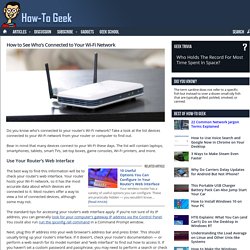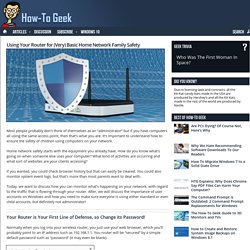

Peps - Pour chiffrer vos communications électroniques. Je suis sûr que vous connaissez tous la messagerie sécurisée ProtonMail, mais connaissez-vous Peps ?

Peps est une solution open source développée pour le Ministère de la Défense Français (coucou Bernard !) Qui permet d'échanger des emails, de collaborer sur des projets, de chater et d'échanger des fichiers facilement et de manière totalement sécurisée grâce à un chiffrement end-to-end (bout à bout). Pour rappel, un chiffrement de bout à bout permet d'éviter le stockage des clés de déchiffrement sur le serveur.
Seul l'expéditeur et les destinataires peuvent lire les messages échangés. Peps fonctionne grâce à NodeJS, MongoDB et dispose d'une batterie d'API REST. T411.io : Comment contourner le blocage DNS. Aux chiottes Google Music ! Hébergez vos MP3 chez vous avec Sonerezh. Aux chiottes Google Music !

Hébergez vos MP3 chez vous avec Sonerezh Alors que Google secoue les bras bien haut pour que chaque internaute le gave de milliards de MP3 (et soit éventuellement balancé à la RIAA ou Hadopi dans quelques années), il existe des solutions alternatives pour héberger soi-même et écouter sa musique en ligne. Je vous ai déjà parlé de Subsonic, Ampache ou encore Sockso et voici un nouveau venu dans la grande famille des logiciels libres.
Il s'agit de Sonerezh imaginé par Thomas et Guillaume, qui nécessite un serveur web, PHP et une base SQL. L'interface est très jolie, conçue en responsive design et bien que ce soit en beta, j'ai trouvé ça plutôt stable. Vous pouvez tester la démo ici. Après niveau fonctionnalité, ce n'est que le début donc c'est du classique, mais ça fait le job. Le bonheur quoi... Je souhaite à Thomas et Guillaume bonne chance pour ce nouveau projet. Sonerezh est téléchargeable ici. How You and Your Neighbors Are Making Each Other’s Wi-Fi Worse (and What You Can Do About It) Wi-Fi networks interfere with each other.

Older Wi-Fi standards are even worse about this, so your old Wi-Fi hardware isn’t just hurting your network — it’s interfering with your neighbors, too. All that interference is bad for everyone’s network, even yours. Unless you live out in the country with no one else around, this is something you need to think about. How to See Who’s Connected to Your Wi-Fi Network. Do you know who’s connected to your router’s Wi-Fi network?

Take a look at the list devices connected to your Wi-Fi network from your router or computer to find out. Bear in mind that many devices connect to your Wi-Fi these days. The list will contain laptops, smartphones, tablets, smart TVs, set-top boxes, game consoles, Wi-Fi printers, and more. Using Your Router for (Very) Basic Home Network Family Safety. Most people probably don’t think of themselves as an “administrator” but if you have computers all using the same access point, then that’s what you are.

It’s important to understand how to ensure the safety of children using computers on your network. Home network safety starts with the equipment you already have. How do you know what’s going on when someone else uses your computer? What kind of activities are occurring and what sort of websites are your clients accessing? If you wanted, you could check browser history but that can easily be cleared. Today, we want to discuss how you can monitor what’s happening on your network, with regard to the traffic that is flowing through your router. Your Router is Your First Line of Defense, so Change its Password!
Normally when you log into your wireless router, you just use your web browser, which you’ll probably point to an IP address such as 192.168.1.1. Take some time, hunt around and find it, then change your password. Jumpshare is a Super Easy Way to Share Files Online. These days, you can share files using all of the different cloud storage providers like Dropbox and OneDrive, but if all you want is a super easy way to share files with people, Jumpshare might be worth a look.

Note: Jumpshare is also available for OS X as well. What’s Different About Jumpshare? The primary selling point with Jumpshare is that it can natively handle over 200 file formats in the browser. So when you share a file with somebody else, they will be able to view the file in their browser, no software (or account for them) required. Jumpshare’s HTML5 file viewer works for almost any type of file. The second major selling point is that Jumpshare is extremely easy to use: you just drag and drop a file onto the icon to upload it, and the share link is immediately on the clipboard, ready to paste. Etablir un tunnel entre 2 machines derrière un NAT. Etablir un tunnel entre 2 machines derrière un NAT Voici un petit soft qui n'est pas tout jeune, mais qui vous rendra bien service si vous êtes derrière NAT et que vous cherchez à contacter une autre machine, elle même derrière un NAT (ou pas).

Partager des fichiers à partir de votre terminal. Partager des fichiers à partir de votre terminal On voit souvent des services de mise en ligne de fichiers comme dl.free.fr, Mega ou encore Dropbox qui propose aussi ce genre de truc.

Mais quand on souhaite partager un truc qui est dispo uniquement sur son serveur, on a que 3 solutions : Synology lance son DiskStation DS414 Slim, un NAS 4 baies abordable.